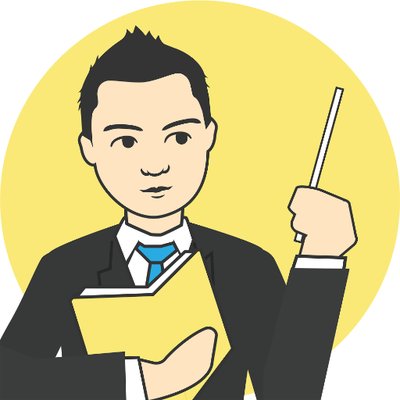If a campaign volunteer shows up at your door, urging you to vote in an upcoming election, you are 10 percent more likely to go to the polls—and others in your household are 6 percent more likely to vote. When you try to recall an unfamiliar word, the likelihood you’ll remember it depends partly on its position in a network of words that sound similar. And when a cell in your body develops a cancerous mutation*, its daughter cells** will carry that mutation; whether you get cancer depends largely on that cell’s position in the network of cellular reproduction.
However unrelated these phenomena may seem, a single scholarly field has helped illuminate all of them. The study of networks can illustrate how viruses, opinions, and news spread from person to person and can make it possible to track the spread of obesity, suicide, and back pain. Network science points toward tools for predicting stock-price trends, designing transportation systems, and detecting cancer.
It used to be that sociologists studied networks of people, while physicists and computer scientists studied different kinds of networks in their own fields. But as social scientists sought to understand larger, more sophisticated networks, they looked to physics for methods suited to this complexity. And it is a two-way street: network science “is one of the rare areas where you see physicists and molecular biologists respectfully citing the work of social scientists and borrowing their ideas,” says Nicholas Christakis, a physician and medical sociologist at Harvard and coauthor of Connected: The Surprising Power of Our Social Networks and How They Shape Our Lives.
The basic elements of a network are simple: it consists of nodes*** connected by links (also called “ties”). But as the numbers of nodes and links increase, the number of possible forms of the network grows dramatically. Likewise, there are innumerable possibilities for what a node and a link can represent. Structurally simple, yet analytically incredibly complex, networks hold the answers to so many questions that at Harvard alone, the number of researchers studying them may reach three digits. Here is a sampling of the newest work in this dynamic field.
Christakis and University of California’s James H. Fowler wrote Connected after discovering that each was working on a special case of network effects (the effect of a spouse’s death on one’s own health, for Christakis; the spread of voting behavior, for Fowler) and realizing they shared an interest in what else could be spreading through networks.
The book guides readers through the field, presenting findings from medicine, biology, sociology, anthropology, political science, economics, mathematics, and beyond. The authors discuss the spread of laughter, tastes in music, sexual behavior, and anxiety over nut allergies. The authors note one study that carefully compared the structure of networks of many phenomena and found a strong similarity between the voting patterns of U.S. senators and social bonding among cows. They also report on Japanese biologist Toshiyuki Nakagaki’s findings that a kind of mold**** can “collaborate” by spreading out in the form of a network to explore all possible paths to a goal, and that it is more efficient than his graduate students in finding the shortest route through a maze. The book also presents his follow-up studies, in which the mold was as good as or better than humans at creating maps for railway systems in Great Britain and Japan. These studies, they say, demonstrate the problem-solving power possessed by networks.
These wide-ranging, sometimes surprising, findings reflect the field today. The boundaries between disciplines are becoming all but meaningless in network analysis; Christakis’s lab group includes scholars of physics, economics, anthropology, computational biology, sociology, and healthcare policy. “Often new knowledge is produced at the intersection of disciplines,” he says, “and in network science this is happening everywhere we look.”
But the core of the Christakis-Fowler collaboration is original research on what spreads through human social networks. With data from the Framingham Heart Study, which has been going on since 1948, they mapped more than 50,000 social ties among 5,124 people (who were connected to an external network of more than 12,000 people). Because the study tracked all manner of health markers and asked subjects about an exhaustive list of behaviors—diet and exercise, medications, smoking, emotions—it was a rich source of data.
The two men started publishing their findings with a splash: a 2007 article in the New England Journal of Medicine reporting that obesity spreads through social networks, as people are apparently influenced by friends’ weight gain to become fat themselves. More perplexing is their finding that obesity spreads through up to three degrees of separation. If a subject named a friend who was also in the study, and that friend’s friend became obese, the first subject’s chances of becoming obese were roughly 20 percent greater. Across one more degree of influence (for instance, husband’s friend’s friend—i.e, three degrees away), the risk was 10 percent greater. Weight gain appears to move through friend groups via some unseen mechanism such as changed eating or exercise behavior, or adjustment of social norms regarding weight.
The authors found similar patterns for happiness, loneliness, depression, alcohol consumption, the decision to stop smoking, and even divorce. “Our health depends on more than our own biology or even our own choices and actions,” they write in Connected. “Our health also depends quite literally on the biology, choices, and actions of those around us.”
Against each trait that spreads through networks, Christakis and Fowler (and others working in the field today) carefully chart how, and between whom transmission occurs. Does geographic proximity matter? Are family relationships more influential than social relationships? What about people who work together? The answers vary depending on what is being transmitted.
Precise knowledge is needed for the type of network-based public-health interventions they envision. In addition to knowing what works—in the case of obesity, perhaps distributing healthy recipes, or posting on Facebook or Twitter that you “feel so great after going for a run” to encourage friends to exercise—such interventions require knowing who is most influential, and this may vary from purpose to purpose. Christakis and Fowler write that a network-based vaccination campaign, targeting people with the most social contacts, could be three times more cost-effective than a campaign that aims for universal vaccination. Campaigns of the latter type over-vaccinate; immunizing only people who are hubs in social networks would enable administering a minimum of doses for maximum effect. For instance, recommendations that healthcare workers receive more vaccinations than average citizens follow a similar model, assuming that such workers will have more contact with sick people and thus are more likely to spread infections. A network-based disease prevention campaign, prioritizing well-connected people when monitoring infection’s spread, could be 700 times more efficient than random monitoring.
But when it comes to diet and exercise, is it better to have people with more connections recommend the healthy recipes and post exercise messages, or to have the positive signals come from close friends of the target? That puzzle has not been solved, even though efficient public-health spending depends on the answers to such questions. However, these network models should provide the insight necessary to come up with these answers one day, as well as answers to a host of political, social, economic, and other problems.
Notes:
*mutation: 突然変異
**daughter cell: 娘細胞(一つの細胞が細胞分裂により二つになったとき、新たにできたそれぞれの細胞をいう。)
***node: 結節点
****mold: カビ






コメントを残す